Bird populations are plummeting worldwide, with billions of birds lost annually to human causes. How can we remind people how remarkable, vital, and important birds are to humanity and the world? C&G Partners designed exhibits, interpretive graphics, and interactive experiences for the passionate, wonderful team of experts at the Cornell Lab of Ornithology Visitor Center. The Lab is globally recognized for raising awareness of the plight of birds, pioneering ornithological research, and expansive citizen science programs.
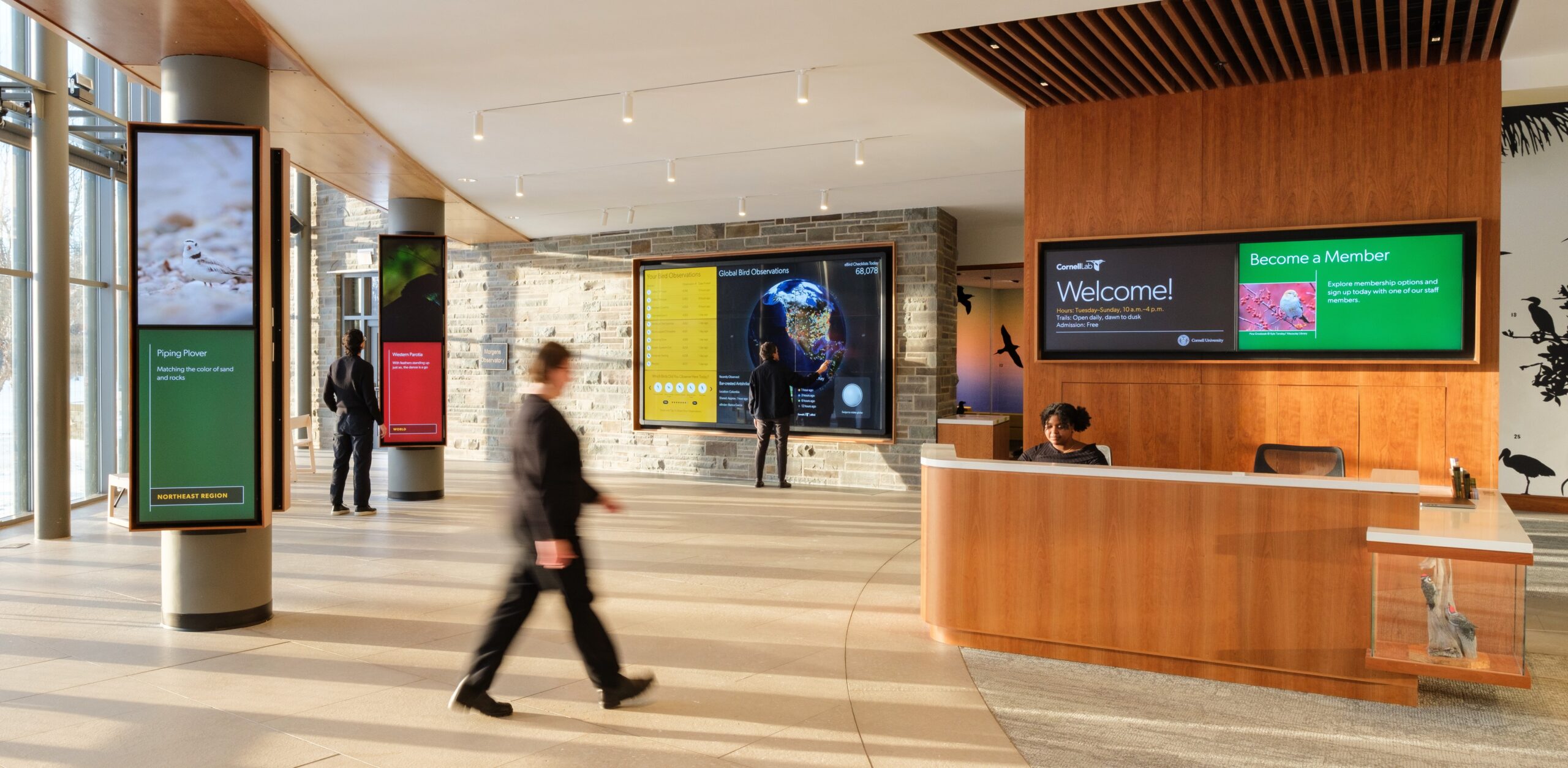
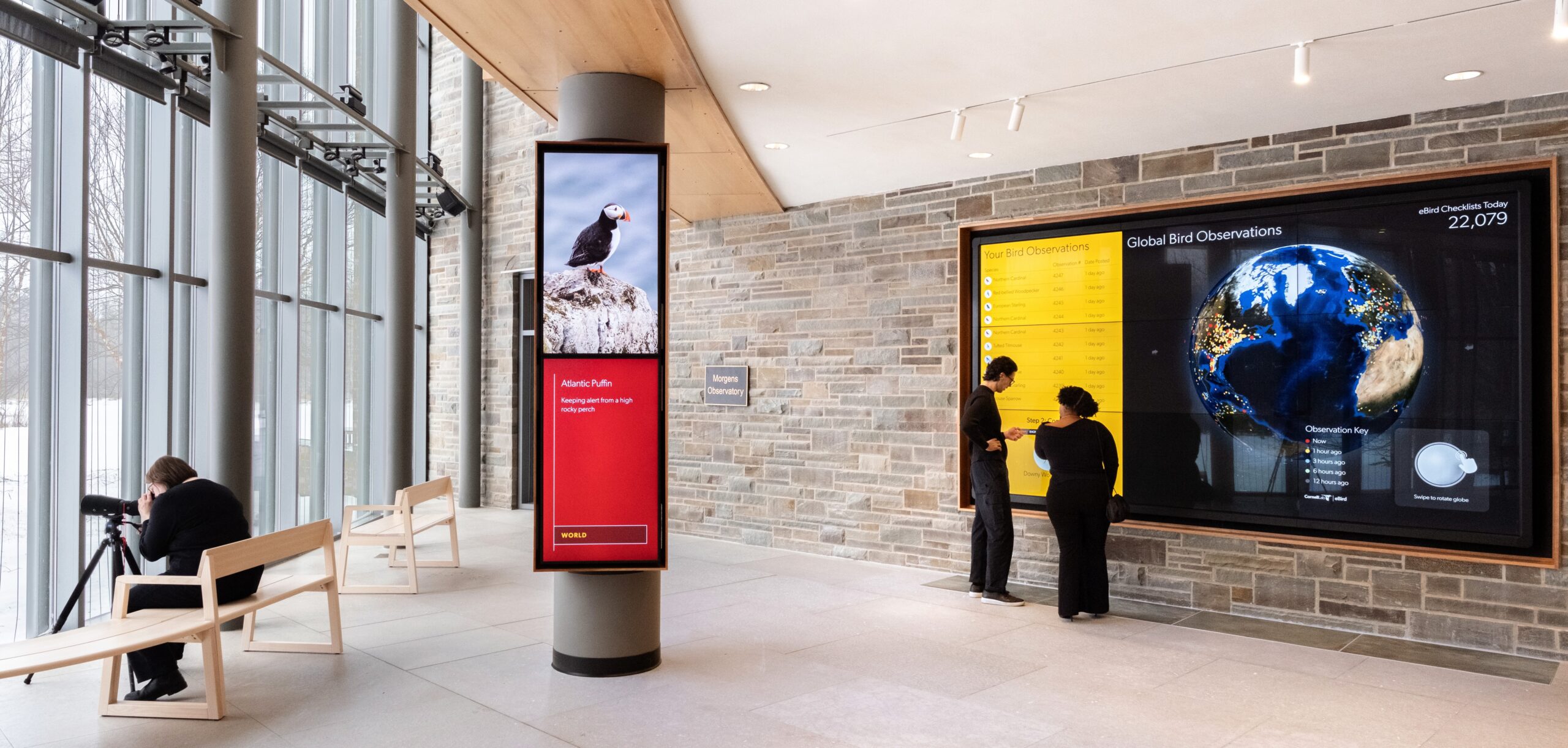
Located on a serene pond within a nature sanctuary, the center establishes an immediate, living connection to its subject matter, integrating the Lab’s local presence with its global environmental conservation goals. The renewed Visitor Center communicates these values through design that is interactive, informative, and intentionally interconnected with the natural landscape. At the entry, visitors encounter a welcoming information desk and digital screens highlighting Lab programs and captivating bird footage from nearby and distant habitats, linking local and global ornithological experiences. The large-scale, real-time, and interactive Birds Here Today installation visualizes real-time bird observations worldwide alongside local observations entered directly on the screen, engaging visitors directly with citizen science initiatives worldwide.
The design of the Visitor Center strengthens connections between the interior exhibits and the natural surroundings. Carefully orchestrated sightlines and new openings across the Bird Discovery Lab and atrium connect to views of the pond and the celebrated bird feeder cam, creating a meaningful dialogue between indoor experiences and the outdoor environment.
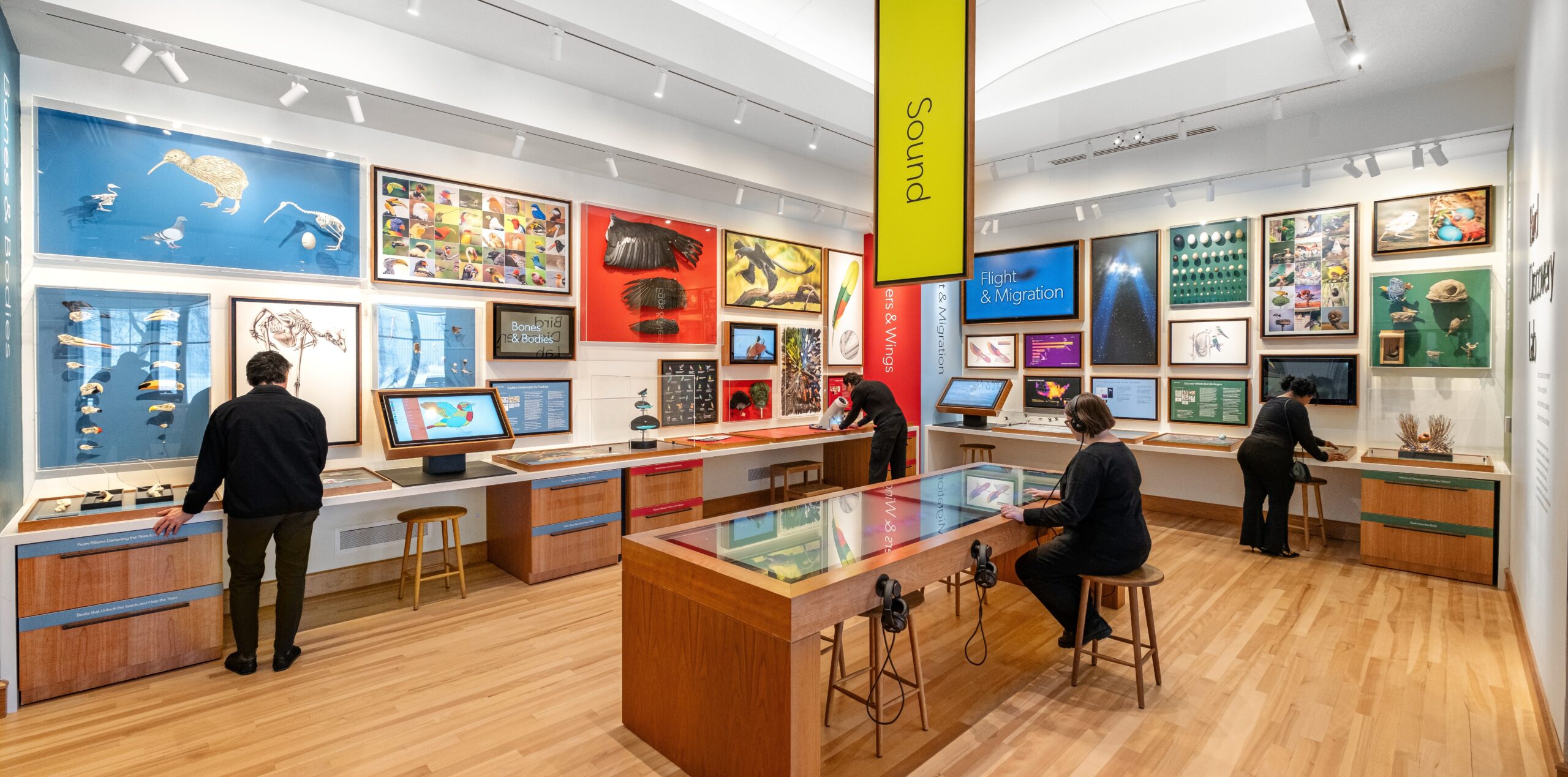
At the heart of the design is the Bird Discovery Lab. This colorful, inviting space features interactive stations, framed exhibits, and specimen drawers, carefully designed to spark curiosity and delight in visitors of all ages. Visitors explore diverse facets of bird biology, ecology, and evolutionary adaptations through curated displays and interactive elements:
The Flight & Migration station includes models, LED visualizations illustrating global bird migration, and an interactive spin browser that lets visitors slow down and closely examine bird flight. Visitors explore how birds connect distant ecosystems, highlighting the critical importance of habitat preservation on a global scale.
Feathers & Wings features detailed exhibits of feather diversity, including an artist-commissioned piece vividly demonstrating this diversity, and a 3D-printed Bird of Paradise illustrating dramatic plumage transformations used in their courtship displays. A Wentzscope allows closer examination of feather structures and colors, deepening appreciation for their complexity and beauty.
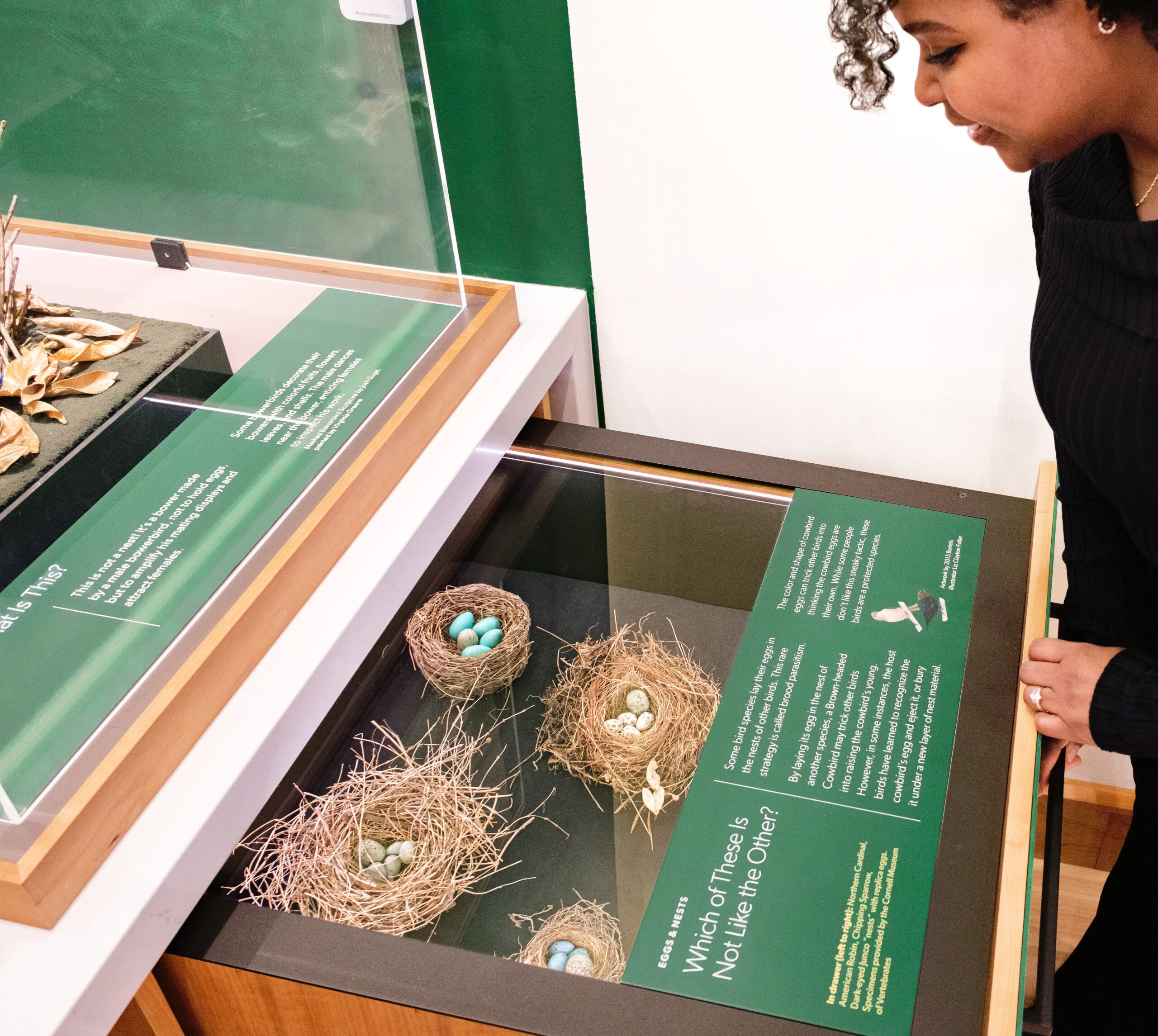
In Eggs & Nests, visitors engage with tactile activities such as a peg maze matching bird species to their eggs, an intricately recreated bowerbird bower, and a specialized murre egg model, demonstrating unique evolutionary adaptations.
At Bones & Beaks, interactive anatomical displays compare lightweight bird bones to heavier mammal bones, emphasizing avian adaptations for flight. An interactive digital station provides detailed “x-ray” views of anatomical systems, offering comprehensive insights into their physiology.
Eyes & Senses invites visitors into immersive installations that illustrate avian sensory perceptions. Utilizing artwork commissioned from a former resident of the Bartels Science Illustration Program, these experiences allow visitors to see through the eyes of a hummingbird, an owl, and a pigeon, illuminating sensory adaptations crucial to survival.
The interactive Sound Table invites visitors to marvel at the complexity of bird vocalizations. Eight visitors can simultaneously listen through headphones, explore visual spectrograms of bird calls and the sounds of other species, and engage in quizzes that match bird sounds to species, deepening an appreciation for the rich auditory experiences of birds in nature.
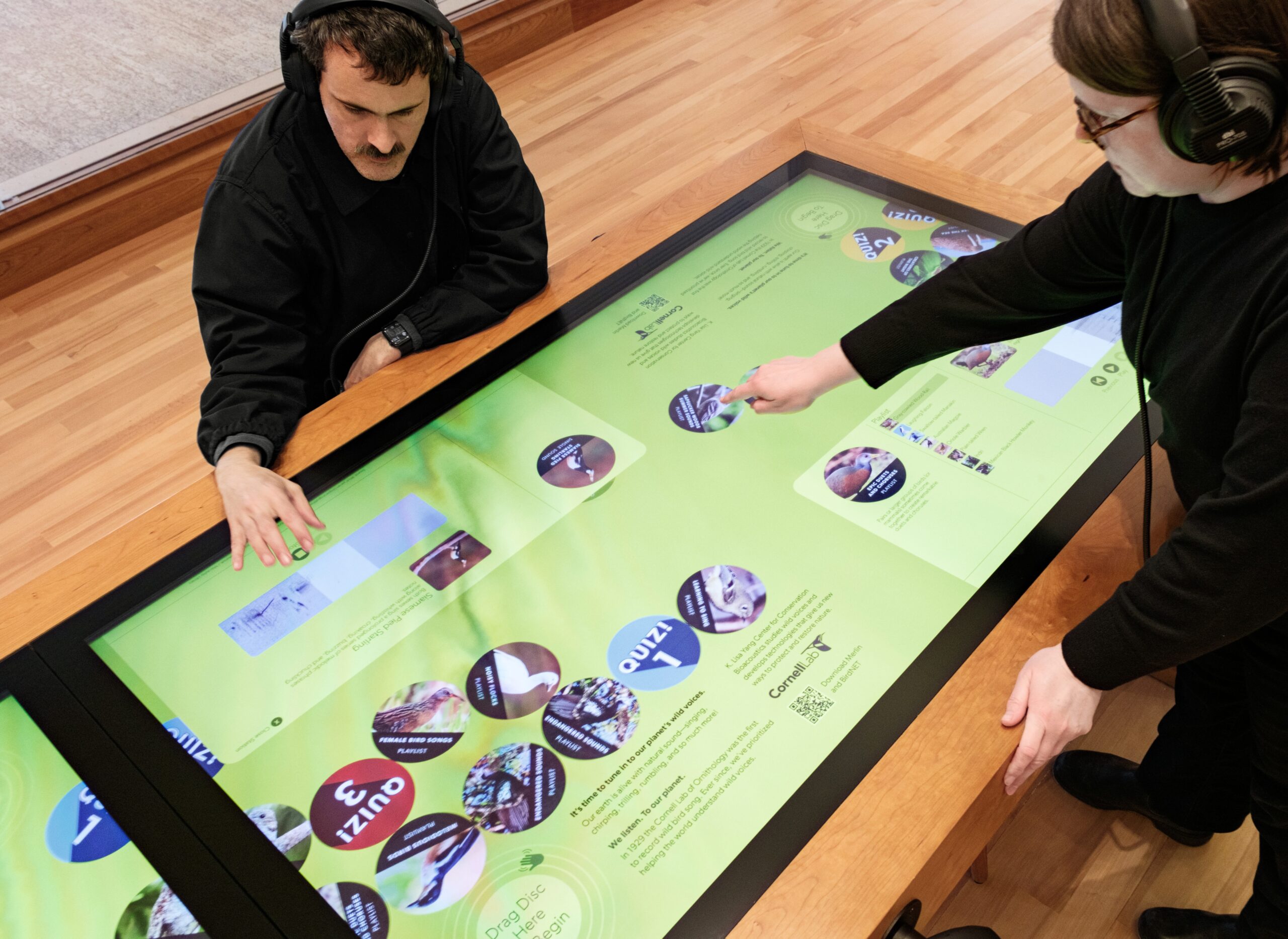
Digital screens within the Visitor Center enrich the experience without overwhelming views of the natural landscape. The enormously popular Cornell Lab FeederWatch Cam has also been repositioned as a focal point, further reinforcing connections between local bird activity and global conservation advocacy.
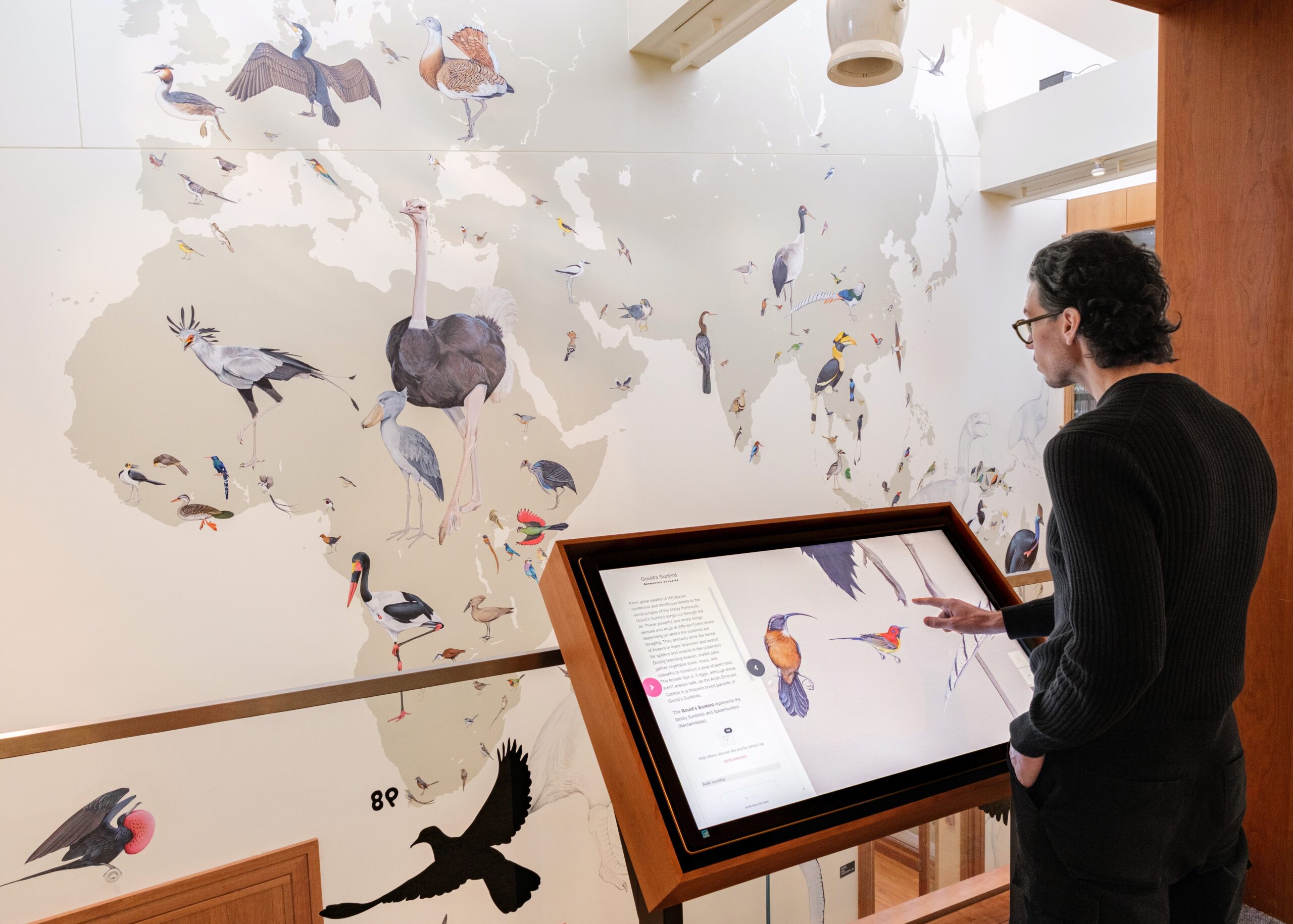
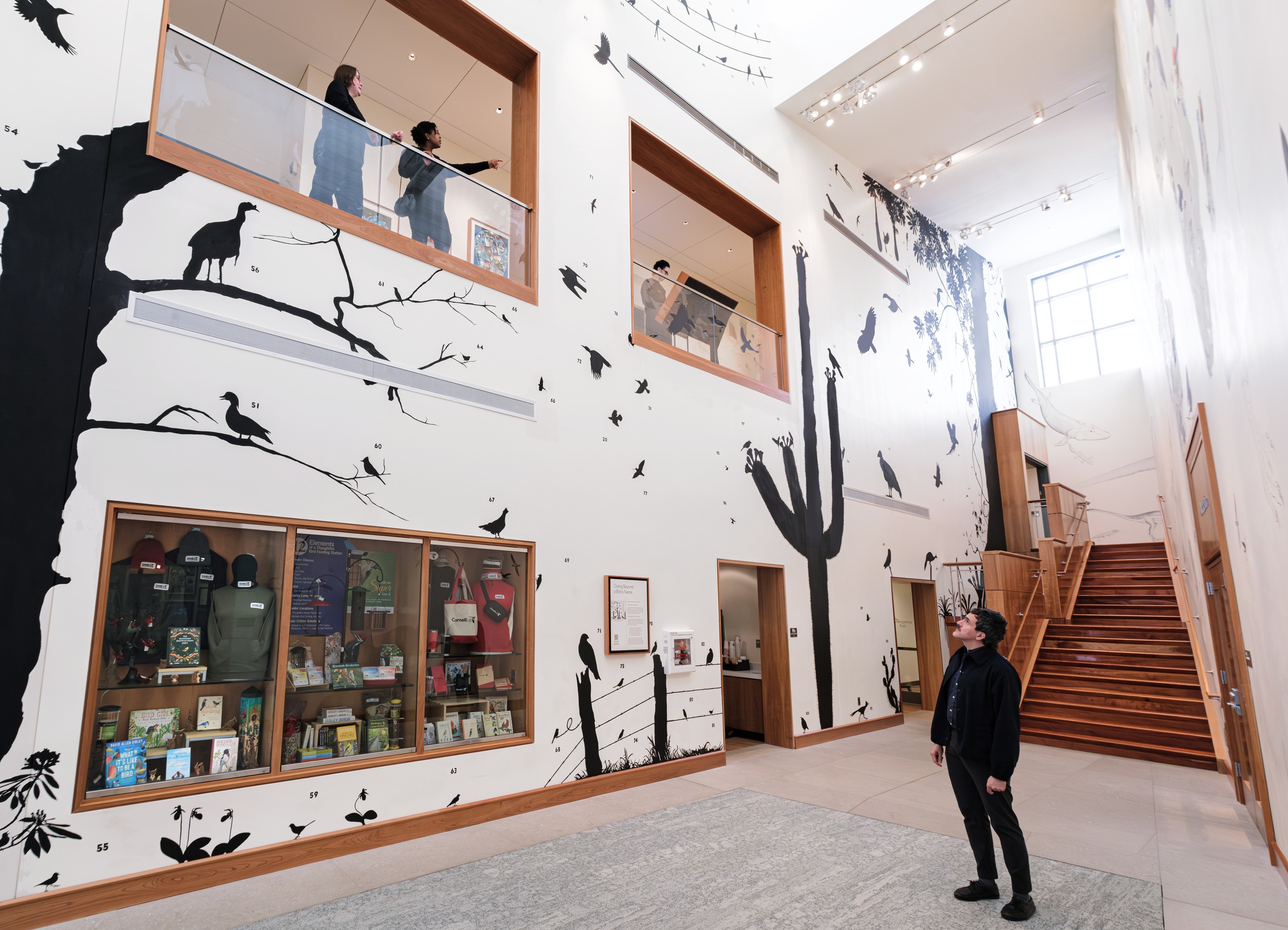
A distinctive donor recognition sculpture represents a bird murmuration, honoring the community of dedicated patrons and generous contributors who collectively support the Lab’s vital research and conservation efforts.
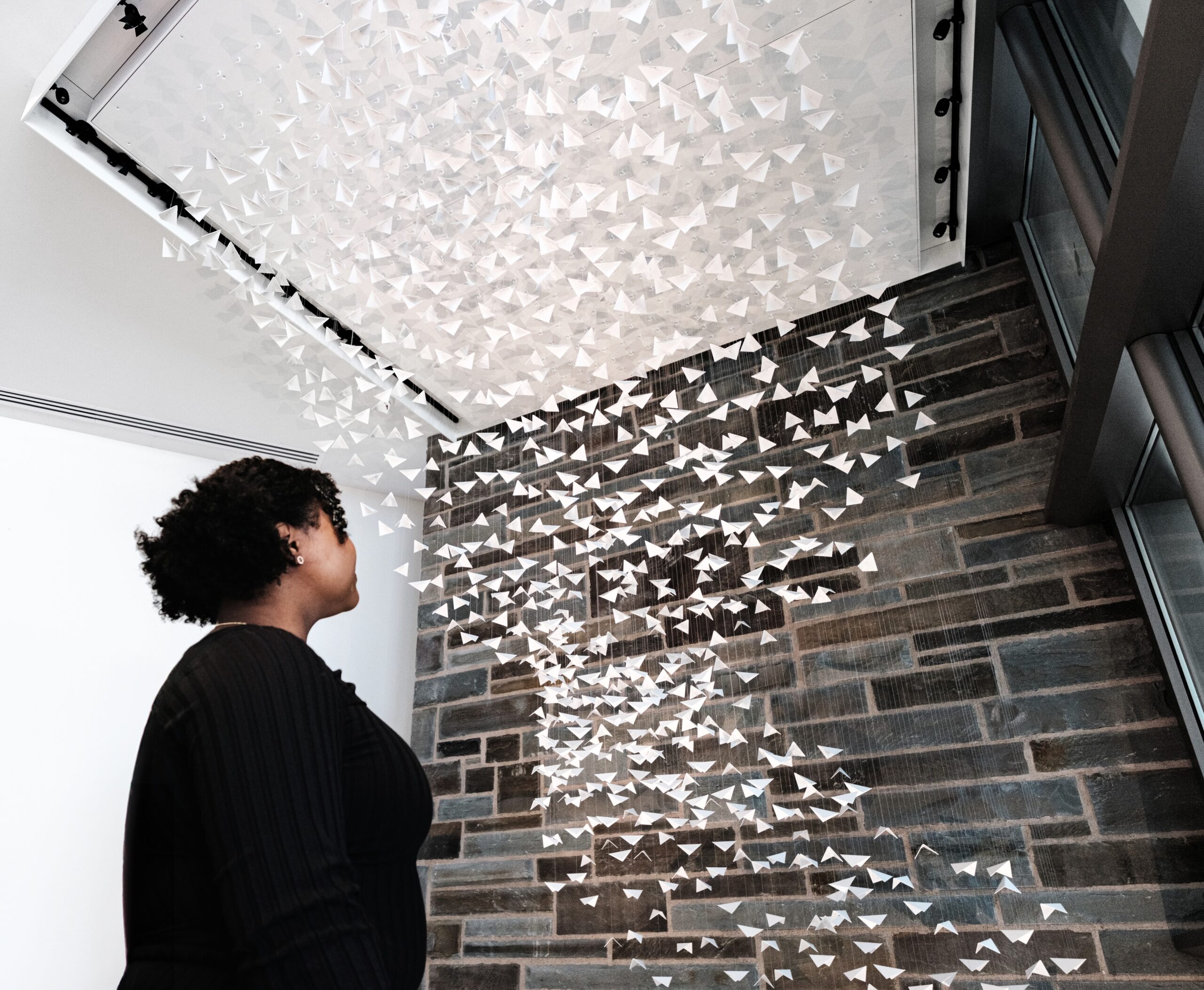
This three-dimensional artwork symbolizes their collective impact, rather than naming each donor individually.
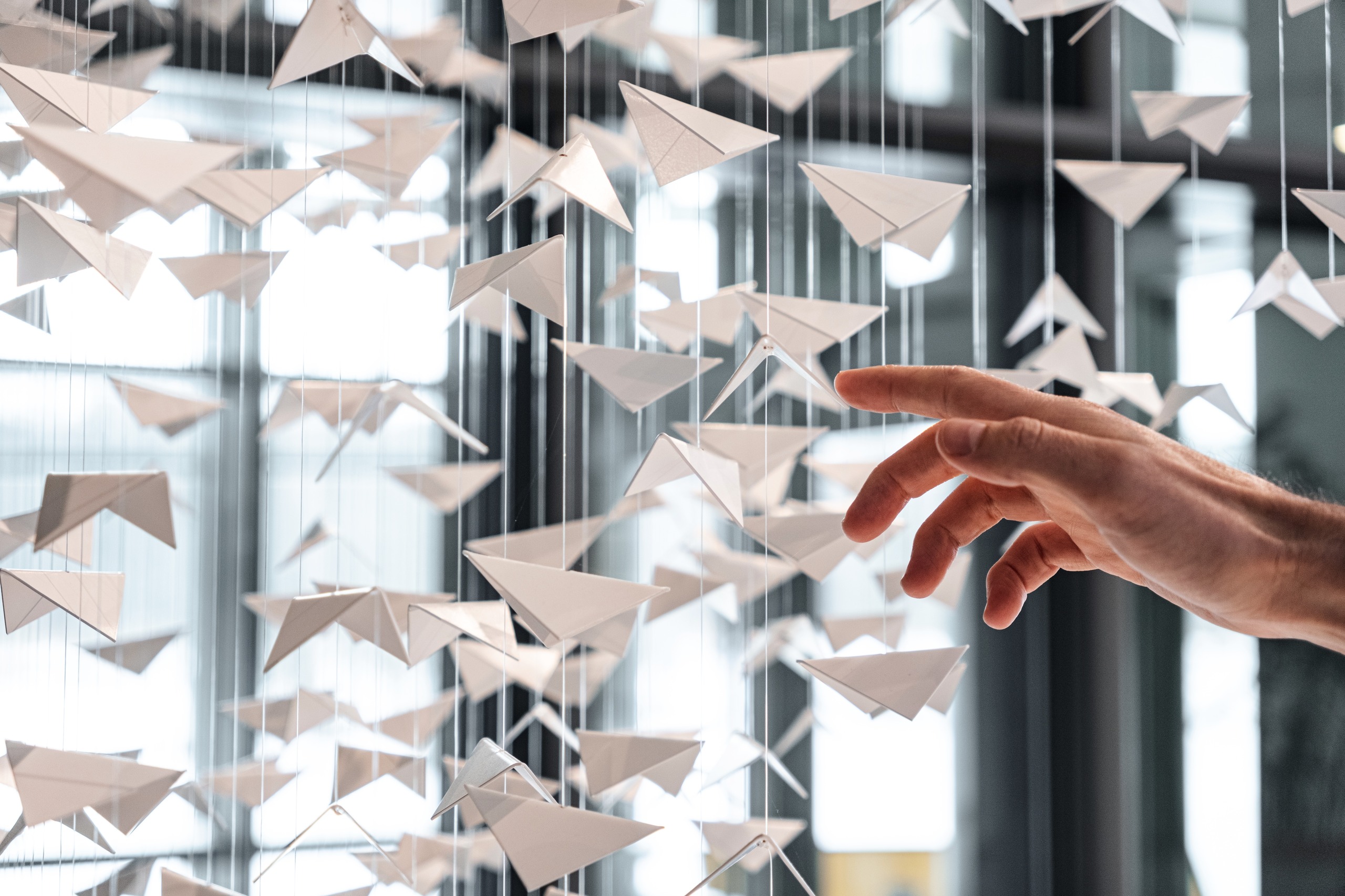
Nearby, the interactive Hope Wall invites visitors to share personal reflections and commitments to environmental stewardship with handwritten cards.
 Through thoughtful integration of exhibit design, interpretive graphics, and interactive media, the refreshed Cornell Lab of Ornithology Visitor Center not only inspires appreciation for birds but also motivates visitors toward active engagement with broader environmental conservation goals, uniquely bridging immediate local experiences with global ecological understanding.
Through thoughtful integration of exhibit design, interpretive graphics, and interactive media, the refreshed Cornell Lab of Ornithology Visitor Center not only inspires appreciation for birds but also motivates visitors toward active engagement with broader environmental conservation goals, uniquely bridging immediate local experiences with global ecological understanding.
![C&G Partners [logo]](https://www.cgpartnersllc.com/wp-content/uploads/2022/07/CGP_Logo-black.png)